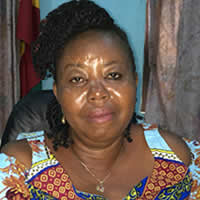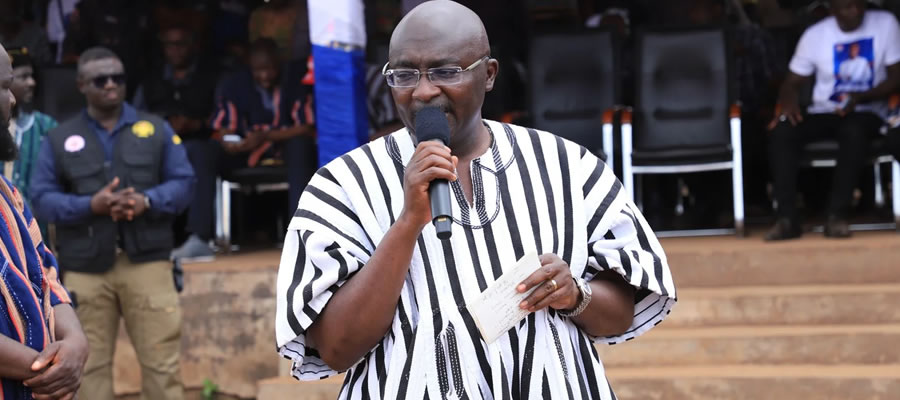

Legality of the Municipality
The Ejura-Sekyedumase was established in 1998 under Legislative Instrument 1400 in accordance with Section 2 of the Local Government Law 1988 (PNDC 207). It was carved out of the Sekyere and Offinso Districts by the PNDC Government, and is thus one of the new Assembly which were established following the introduction of the decentralized programme in 1988.
Composition of Assembly
The Ejura–Sekyedumase Municipal Assembly comprises 52 Assembly persons (46 males and 6 females), 36 elected and 16 appointed in addition to the MCE and MP who has no voting rights. The assembly also has a Presiding Member who presides over meetings of the Assembly and is in charge of complaints and public relations. The assembly has a 17-member Executive Committee which performs/exercises its executive and co-ordinating functions. It must be emphasized that the 12% female representation in the assembly compares favourably with the 11% female representation in parliament. This however depicts a greater gender disparity in all levels of decision making, thus marginalizing the views and needs of females and their overall contribution to development in the country.
Decentralized Departments
In accordance to the Local Government Act, Act 462, the assembly has the following decentralized departments, which are to perform the functions hitherto performed by 22 central government agencies. It is the duty of the Assembly to administer and control the budgetary allocations of the departments to avoid duplication, rivalry, unnecessary empire building and waste of scarce resources, which is common among the various departments. Even though the MA has all the required eleven departments, some components of the departments are lacking due to staffing problems.
These include:
• Trade and Cottage Industry for Trade and Industry
• Parks and Gardens for Physical Planning
• Youth, Sports and Ghana Library Board for Education, Youth and Sports
• Rural Housing for Works Department
• Information Service and Statistical Service for Central Administration
• Department of Agricultural Engineering
• Department of Feeder Roads for Works
The lack of certain components of the departments in the district implies that the roles/ functions to be performed by such components can not be undertaken. This limits the overall development of the district. It is therefore recommended that the lacking departments be established to perform the necessary functions for the development of the district.
Other Sub vented Organizations, Departments and Agencies
Apart from the named decentralized departments, the municipality has the following sub vented organizations department and agencies. They are few due to lack of qualified personnel, office and residential accommodation.
These are:
• Ghana Telecom.
• National Electoral Commission
• Commission for Human Rights and Administrative Justice (CHRAJ)
• National Commission for Civic Education
• Ghana Post
• Volta River Authority/Northern Electrification Department
• Ghana Police Service
Sub - Structures
These are subordinate bodies of the MA. They perform functions assigned them by the institutions setting up the Assembly or delegated to them by the Assembly. The sub – structures in the Ejura Sekyedumase are the Urban/Area councils and the Unit Committees. There is one Urban Council, which is Ejura the capital. Urban councils are created for settlements with population above ’15,000’ and which are cosmopolitan in character. The Ejura Urban Council, like all others, is faced with urbanization and management problems. Apart from Ejura Urban Council, the four remaining area councils are not functional as expected.
There are also four Area Councils in addition to the one Urban Council in the district. These are Sekyedumase Area Council (Sekyedumase), Eboum Area Council (Eboum), Dromankoma-Bonyon Area Council (Dromankuma) and Kasei Area Council (Kasei). These areas have predominantly rural population. They are essentially rallying points of local enthusiasm in support of the development objectives of the Assembly. The Assembly also has fifty five (55) Unit Committees. A unit is a settlement or group of settlements with a population between 500-1000 in rural areas and 1500 in urban areas. The Unit Committees are distributed as shown in pdf file.
The Unit Committees in the Municipal are to be in close touch with the people, educate, organize communal labour, raise revenue and ensure environmental cleanliness, register births and deaths, implement and monitor self-help projects among others. The poor performance of the sub district structures reduces their effective communication and collaboration with their communities and the Administration as well as participation. This limits the development activities being undertaken in the various communities.
Performance of Sub- Structure
It must be said that the performance of the sub structures in the Assembly is very poor due to the following reasons:
• Inadequate knowledge of their roles and responsibilities in community development and governance
• Lack of requisite resources like funds, equipment, means of transport to execute their mandate
• Lack of personnel
• Inadequate skills in managing participatory development process
Security and Disaster Management
Security management of the Assembly is in the hands of the Police and Fire Service. The details of these are elaborated below.
The Police Service
The number of police offices in the municipality is two, one at Sekyedumase and the other at Ejura.
Collaboration between Ejura and Sekyedumase Offices
The collaboration between the two offices is very good, the office at Ejura, which is the capital, houses the police office; as such the Sekyedumase office is under Ejura.
Personnel
The number of personnel required in the existing offices is twelve (12) however only six (6) are currently stationed there.
Effects of the Shortage of personnel on Performance of the Department
Moving around the various villages under the municipality to ensure law and order is extremely difficult causing a low level of law-abiding orderliness on the whole.
Sub-Departments
There is no Women and Juvenile Unit (WAJU) under the Police Service Department in the municipality. There is also no committee of neighbourhood “Watchdog” groups. The absence of these departments implies a high degree of vulnerability for women and children as well a state of insecurity in the municipality. The major crime cases in revolve around assault, theft and threatening.
Challenges
The Department faces several challenges and these include:
• Less response to problems facing the Department,
• Inadequate personnel and
• Lack of accommodation for personnel.
Fire Service Department
Existing Offices
There is only one (1) fire service office serving the whole municipality. The number of offices however required for the efficient provision of services by the Department is two (2).
Collaboration
The district Fire Service Department works in conjunction with the Mampong and Atebubu Fire Service Departments because there are no logistics or equipment for fighting fire outbreaks available to them.
Personnel
The required number of personnel for the entire district is thirty (30), however, only eighteen (18) are currently in the municipality.
Causes of Fire Outbreaks
Most of the fire outbreaks in the municipality are caused by one of the following:
• Overloading of electrical gadgets,
• Wildfires through farming practices and
• Petrol storage in homes.
Challenges
Some of the major challenges faced by the Department are:
• Harassment of firemen during fire outbreaks by inhabitants of communities,
• Inhabitants do not pay heed to fire preventive measures advocated for by the department,
• Absence of fire fighting equipment demoralizes personnel and
• Ineffectiveness and inefficiency due to lack of logistics.
Summary Of Development Problems And Priorities
The analysis of the current situation revealed a number of problems that militate against the development. A summary of these problems under the main thematic areas are presented in this section. The identification of these problems provides the basis for interventions in the municipality.
Summary of Key Development Problems
The key development problems, which need to be addressed to meet conditions for improved standard of living, are outlined under various GPRS II Pillars:
Private Sector Competitiveness
• Low production and productivity in agriculture
• Low productivity in commerce
• Low levels and seasonal incomes
• Poor Road Condition
• Youth Unemployment
• Inadequate Access to Credit and Farm Inputs
• Inadequate Access to Electricity
• Poor Market Infrastructure
• High incidence of animal diseases
Human Resource Development
• Poor Educational Infrastructure
• Indiscriminate Defecation
• Inadequate Access to Potable Water
• Inadequate Refuse Dumps
• Inadequate Access to Health Facilities
• Low utilization of health facilities
• High Illiteracy Rate
• Low enrollment and school participation rate
• Poor Housing Condition
• Haphazard physical development
• Inequitable distribution of facilities and services
Good Governance and Civic Responsibility
• Poor performance of sub-district institutions.
• Low level of awareness of Area Council functions, responsibilities and activities
• Weak institutional capacity
• Low participation of women in decision making
• Low revenue generation capacity
• Non adherence to planned expenditure
• Weak Internal Control Mechanism
Summary of Community Needs and Aspirations
Following the situation analysis, the community needs and aspirations which were realized in the communities are as follows:
• Rehabilitation of roads
• Provision and extension of electricity
• Provision of heath facilities
• Rehabilitation and construction of classroom blocks
• Construction of teachers’ quarters
• Provision of farm inputs and credit
• Provision of public toilets.
• Creation of employment opportunities
• Provision of market infrastructure
• Provision of processing equipment
• Provision of storage facilities-warehouse
• Provision of additional boreholes
• Provision of Small-Scale irrigation facilities.
Date Created : 11/18/2017 5:54:44 AM











 facebook
facebook
 twitter
twitter
 Youtube
Youtube
 +233 593 831 280
+233 593 831 280 0800 430 430
0800 430 430 GPS: GE-231-4383
GPS: GE-231-4383 info@ghanadistricts.com
info@ghanadistricts.com Box GP1044, Accra, Ghana
Box GP1044, Accra, Ghana